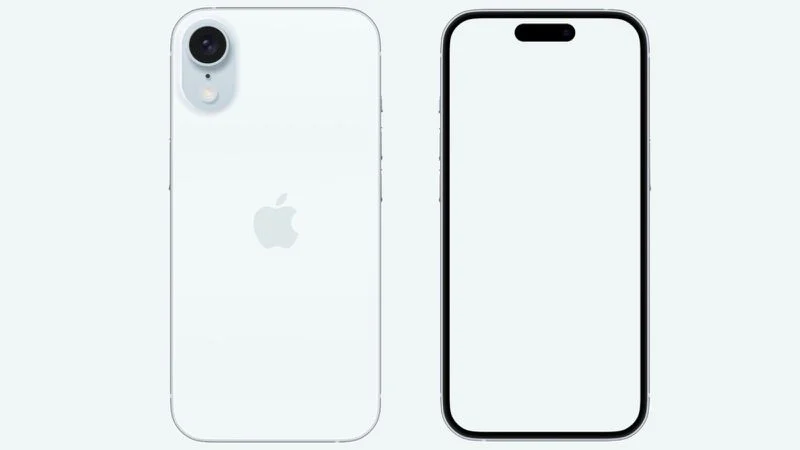The tech world is abuzz with anticipation for Apple’s first product releases of 2025, and among the most eagerly awaited are the updated 13-inch and 15-inch MacBook Air models. While official announcements remain shrouded in Apple’s characteristic secrecy, a flurry of rumors and leaks paints a compelling picture of what we can expect from these ultraportable powerhouses.
Under the Hood: The M4 Powerhouse
At the heart of these new MacBook Airs is expected to be Apple’s already-released M4 chip. This silicon marvel, boasting a 10-core CPU and a 10-core GPU, has already proven its mettle in recent updates to the MacBook Pro, iMac, and Mac mini. Benchmark tests, like those conducted on Geekbench 6, suggest the M4 delivers a substantial performance boost, offering up to a 25% increase in multi-core CPU performance compared to its predecessor, the M3. This translates to smoother multitasking, snappier application launches, and an overall more responsive user experience.
Beyond raw power, the M4 also promises significant improvements in power efficiency. This is crucial for the MacBook Air, a device renowned for its all-day battery life. With the M4’s enhanced efficiency, users can anticipate even longer periods of unplugged productivity, making it the perfect companion for on-the-go professionals and students.
Memory and Design: Refining the Formula
Apple’s recent decision to increase the base RAM in all MacBook Air models to 16GB is a welcome change. This trend is expected to continue with the 2025 models, ensuring smooth performance even with demanding applications and workflows. This eliminates the bottleneck that 8GB RAM sometimes presented, particularly for users juggling multiple applications or working with large files.
In terms of design, no radical changes are anticipated. The MacBook Air underwent a significant redesign in 2022, and it’s likely Apple will stick with this sleek and modern aesthetic. This means we can expect the same thin and light form factor, the iconic wedge shape, and the vibrant Liquid Retina display. This focus on internal upgrades rather than a complete overhaul allows Apple to focus on refining the user experience.
Enhanced Features: Borrowing from the Pro Line
Drawing inspiration from the recent MacBook Pro updates, the new MacBook Air models are likely to inherit some key features. One of the most anticipated additions is an upgraded 12-megapixel camera with support for Center Stage. This intelligent feature automatically adjusts the frame during video calls, keeping the user perfectly centered even as they move around. This is a significant improvement for video conferencing and online collaboration.
Furthermore, the new camera is also expected to support Desk View, a clever feature that provides an overhead view of the user’s desk. This can be incredibly useful for showcasing physical objects or documents during presentations or online tutorials.
Connectivity is also expected to receive a boost. The new MacBook Air models are rumored to feature three Thunderbolt 4 ports, an upgrade from the two Thunderbolt 3 ports found on current models. This increase in bandwidth and connectivity options will allow users to connect more peripherals and external displays with greater ease. The ability to support up to two external displays, even with the laptop lid open, will be a boon for multitasking and productivity.
A Touch of Luxury: The Nano-Texture Display
A more speculative, yet exciting possibility, is the inclusion of a nano-texture display option. This special coating, currently available on the MacBook Pro and iMac, minimizes glare and reflections, making the display easier to view in bright environments. While it’s uncertain whether Apple will extend this feature to the MacBook Air, its inclusion would undoubtedly elevate the user experience, especially for those who work in challenging lighting conditions.
Timing and Release: Early 2025 Launch Expected
Recent hints within macOS Sequoia 15.2, coupled with insights from reliable sources like Bloomberg’s Mark Gurman, suggest a relatively early launch for the new MacBook Air models. Gurman has indicated these devices will be announced “earlier” than other rumored spring releases, such as a new iPhone SE. This points towards a potential announcement via press release on the Apple Newsroom website sometime between January and March. This strategy would allow Apple to clear the way for a larger spring event later in the year.
A Compelling Upgrade:
The anticipated updates to the MacBook Air in 2025 represent a significant step forward for Apple’s ultraportable lineup. With the powerful M4 chip, enhanced features borrowed from the Pro line, and refinements to connectivity and display technology, these new models are poised to offer a compelling blend of performance, portability, and user experience. While we await official confirmation from Apple, the whispers of the wind suggest a bright future for the MacBook Air.
Source





